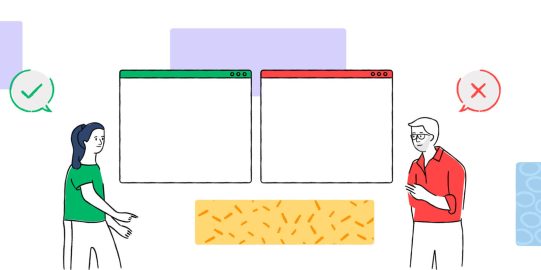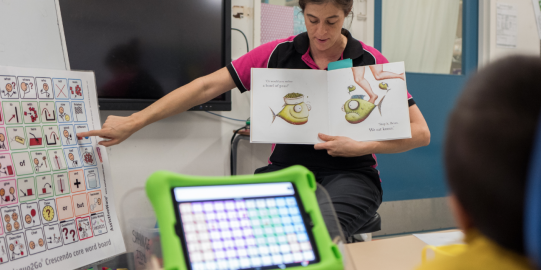Download the Learn AAC Guide (PDF)
Setting up for AAC
- Presume competence
We presume competence. Presuming competence affects how we make choices around Augmentative and Alternative Communication (AAC), and how we provide opportunities and access to words, communication functions and the alphabet. Presuming competence also means that there are no prerequisite skills or age requirements to start using AAC. - Select a robust AAC system
Select a robust AAC system, based on core words with quick access to fringe vocabulary, and the alphabet - Choosing a grid size
Choose a grid size based on what the AAC user can see and touch, not based on cognitive skills, receptive language or what we think the AAC user can do. - Personalize vocabulary and system
Personalize the vocabulary so the AAC user has access to important words. Customize the system settings to meet the AAC user’s needs. - Make AAC always available
Make every environment set up for instant access to AAC. AAC should always be available. Consider cases, straps, paper-based copies as well as having the device charged and turned on. - Get the team on board
All members of the team know about AAC and are ready and willing to be a part of AAC learning. - Plan for AAC throughout the day
Look at routines and make a plan for where, when and how AAC can be integrated in the day.
Starting communication
- Start modeling
Point to words on the AAC system as we talk to the AAC user. Model regularly throughout the day. Model different reasons to communicate - not just requests. Model in conversations and natural interactions. - Activity-specific vs using robust vocabulary
Use core words and fringe folders, rather than creating activity specific boards for everything. - Consider communication functions
When we consider communication functions, we can plan and then model words that will build language and meaningful communication. We can expand an AAC user’s world beyond choice-making! - Build Communication Partner skills
Communication Partners will model words on the AAC system. We wait, prompt & respond to the AAC users attempts at communication. We make comments, rather than ask questions and accept all forms of communication. - Engage and Interact
Choose engaging and interesting activities, that give the AAC user motivation to communicate. Create opportunities for communication. Model on the AAC system during conversations and everyday interactions.
Building language and communication
- Learn about core word teaching strategies
Strategies for teaching core words can include: planning core words based on activities or communication functions, teaching using the Core Word of the week, or using the Descriptive Teaching Model. - Teach Grammar
Consider ways to teach combining words and grammar to AAC users who are ready. - Integrating comprehensive literacy instruction
Integrate communication learning alongside comprehensive literacy instruction for AAC users. This includes providing opportunities for learning sounds/letters, reading, spelling and writing. - Get practical ideas for building language
We need to have bank of ideas and materials that support continued modeling and AAC learning. These ideas will build language and communication for AAC users. - Review and reflect
Review and monitor progress. Reflect and make changes. Take videos. Try new things and continuing to push AAC without giving up!
Potential Roadblocks to success
- Give up too soon
Do not give up too soon! Be persistent! Make a plan for success. Celebrate successes. - Lack of support in different environments
Make AAC available in those different environments. Support it by working with teams. Collect evidence to share. - Stalled at choice-making and requesting
Do not limit language by only offering choices. Instead model language for different communication functions. - Different AAC Systems in one environment
Teams need to get to know the systems. They need more flexibility to fast switch between systems. Often, AAC users are more flexible than the environment! - AAC will stop a person learning to speak
Research shows that AAC can have positive effects on speech and language development, and does not stop an AAC user learning to speak. - AAC users are required to prove themselves
We should be presuming competence and not requiring any prerequisite skills before they can be eligible for a full robust AAC system.
NOTE: Every AAC user is different! Be flexible at each phase of the journey!




